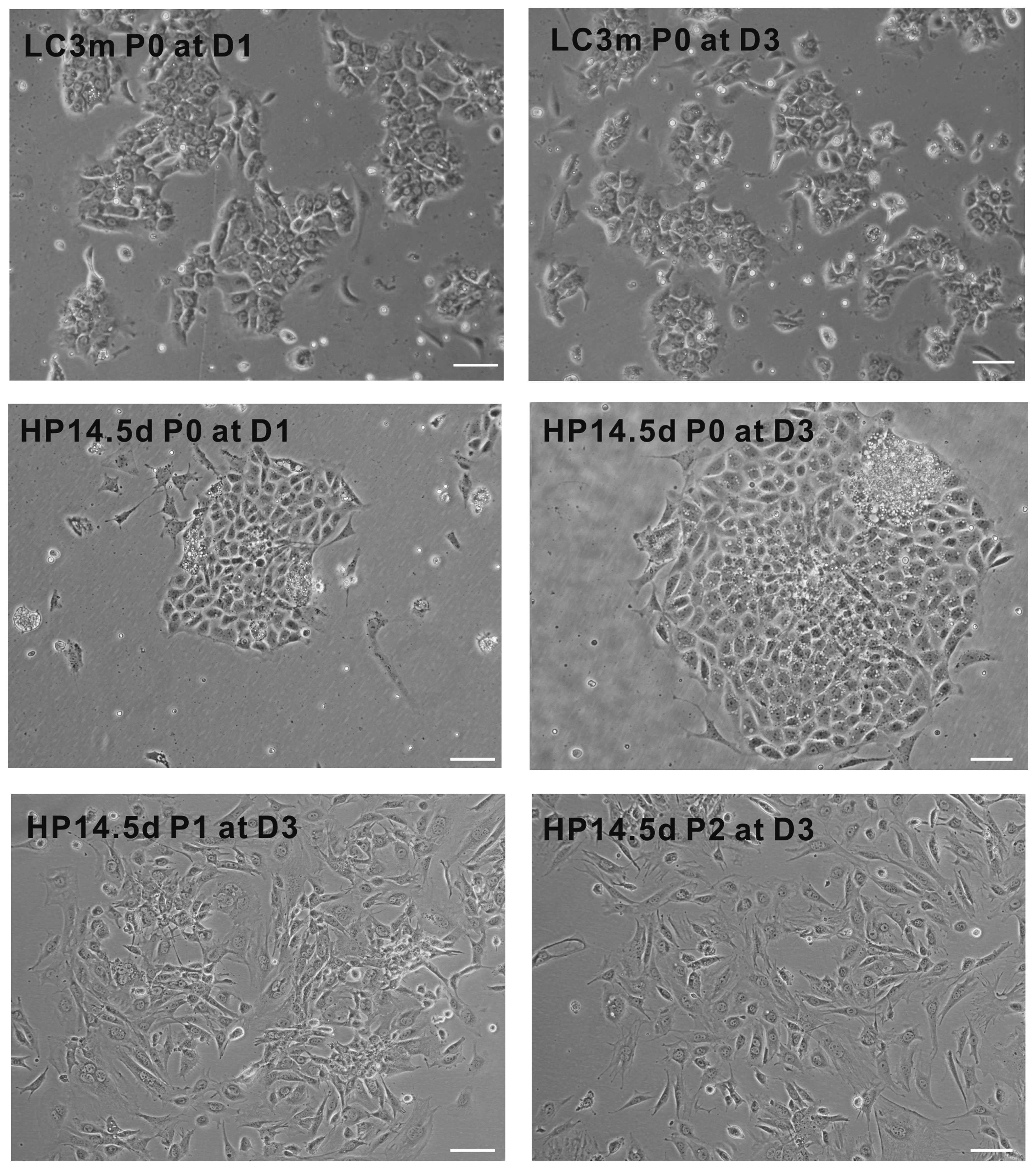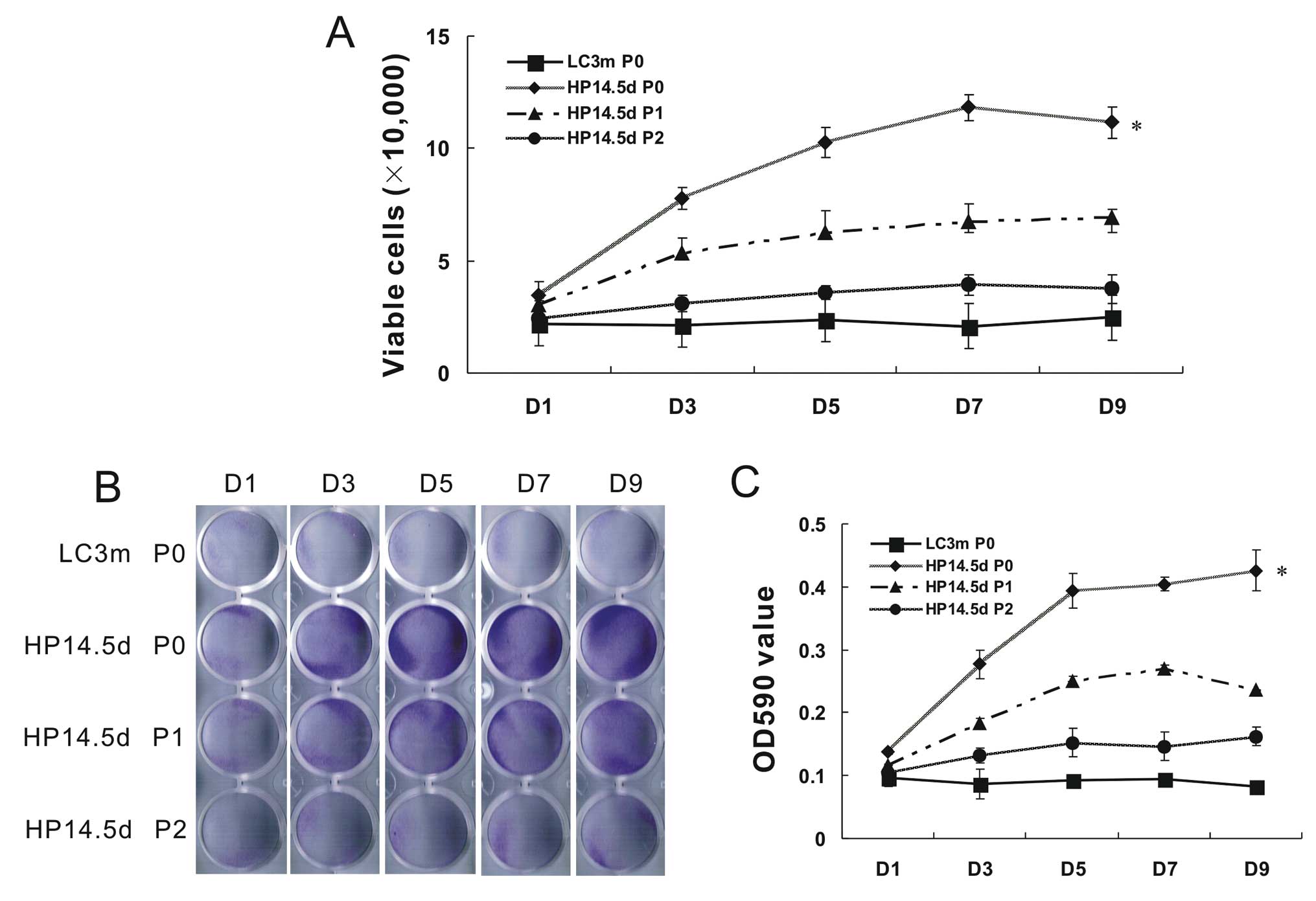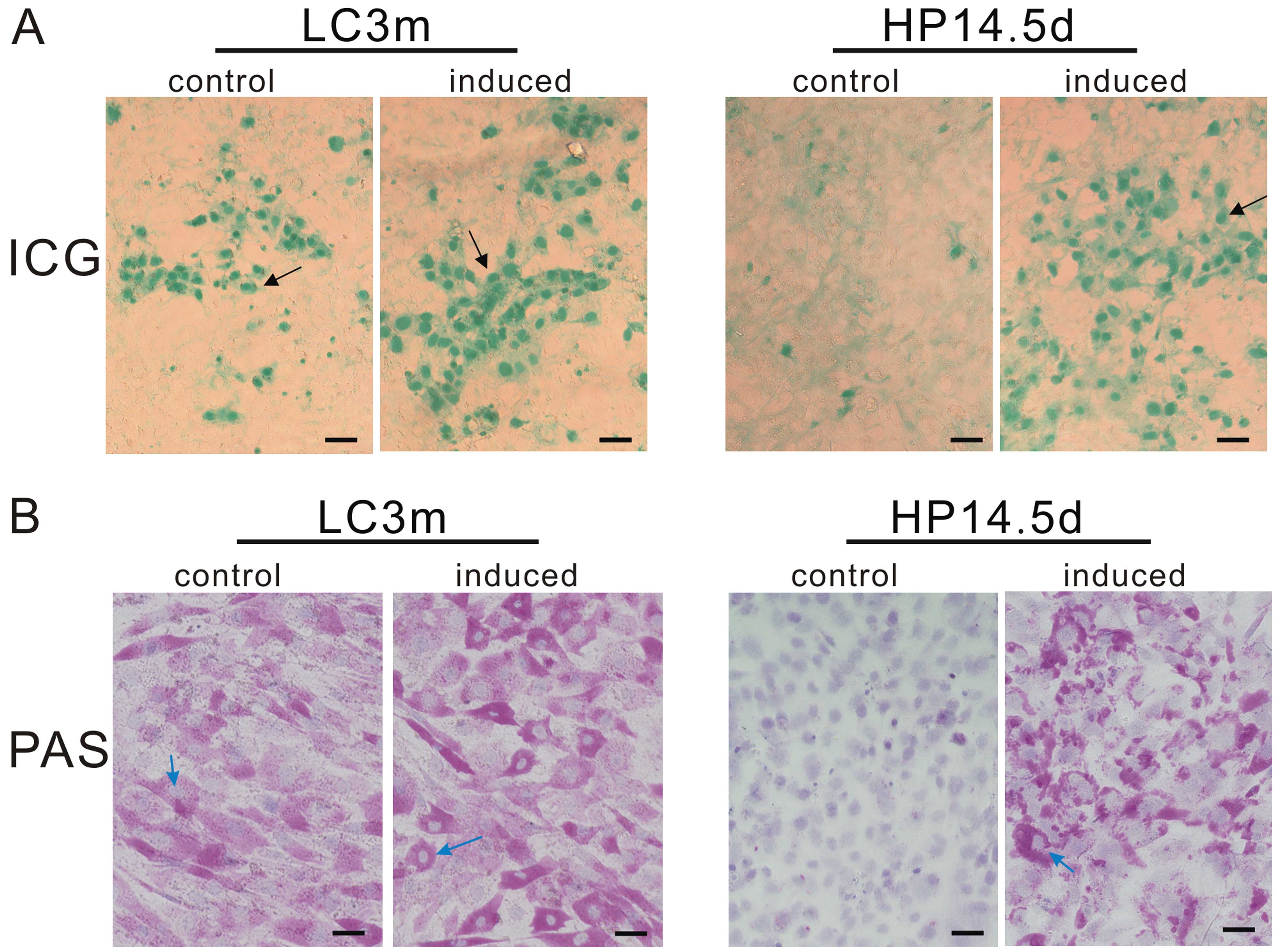|
1
|
Clavien PA, Lesurtel M, Bossuyt PM, Gores
GJ, Langer B and Perrier A: OLT for HCC Consensus Group:
Recommendations for liver transplantation for hepatocellular
carcinoma: an international consensus conference report. Lancet
Oncol. 13:e11–e22. 2012. View Article : Google Scholar : PubMed/NCBI
|
|
2
|
Samuel D, Colombo M, El-Serag H, Sobesky R
and Heaton N: Toward optimizing the indications for orthotopic
liver transplantation in hepatocellular carcinoma. Liver Transpl.
17(Suppl 2): S6–S13. 2011. View
Article : Google Scholar : PubMed/NCBI
|
|
3
|
Sze YK, Dhawan A, Taylor RM, Bansal S,
Mieli-Vergani G, Rela M and Heaton N: Pediatric liver
transplantation for metabolic liver disease: experience at King’s
College Hospital. Transplantation. 87:87–93. 2009.PubMed/NCBI
|
|
4
|
Grant D, Fisher RA, Abecassis M, McCaughan
G, Wright L and Fan ST: Should the liver transplant criteria for
hepatocellular carcinoma be different for deceased donation and
living donation? Liver Transpl. 17(Suppl 2): S133–S138. 2011.
View Article : Google Scholar : PubMed/NCBI
|
|
5
|
Katyal S, Oliver JH III, Buck DG and
Federle MP: Detection of vascular complications after liver
transplantation: early experience in multislice CT angiography with
volume rendering. AJR Am J Roentgenol. 175:1735–1739.
2000.PubMed/NCBI
|
|
6
|
Lacaille F: Liver transplantation and
liver cell transplantation. Clin Res Hepatol Gastroenterol.
36:304–307. 2012. View Article : Google Scholar
|
|
7
|
Lee SW, Wang X, Chowdhury NR and
Roy-Chowdhury J: Hepatocyte transplantation: state of the art and
strategies for overcoming existing hurdles. Ann Hepatol. 3:48–53.
2004.PubMed/NCBI
|
|
8
|
Sancho-Bru P, Najimi M, Caruso M, Pauwelyn
K, Cantz T, Forbes S, Roskams T, Ott M, Gehling U, Sokal E,
Verfaillie CM and Muraca M: Stem and progenitor cells for liver
repopulation: can we standardise the process from bench to bedside?
Gut. 58:594–603. 2009. View Article : Google Scholar : PubMed/NCBI
|
|
9
|
Ito H, Kamiya A, Ito K, Yanagida A, Okada
K and Nakauchi H: In vitro expansion and functional recovery of
mature hepatocytes from mouse adult liver. Liver Int. 32:592–601.
2012. View Article : Google Scholar : PubMed/NCBI
|
|
10
|
Gaudio E, Carpino G, Cardinale V,
Franchitto A, Onori P and Alvaro D: New insights into liver stem
cells. Dig Liver Dis. 41:455–462. 2009. View Article : Google Scholar : PubMed/NCBI
|
|
11
|
Hughes RD, Mitry RR and Dhawan A: Current
status of hepatocyte transplantation. Transplantation. 93:342–347.
2012. View Article : Google Scholar : PubMed/NCBI
|
|
12
|
Souza BS, Nogueira RC, de Oliveira SA, de
Freitas LA, Lyra LG, Ribeiro dos Santos R, Lyra AC and Soares MB:
Current status of stem cell therapy for liver diseases. Cell
Transplant. 18:1261–1279. 2009. View Article : Google Scholar : PubMed/NCBI
|
|
13
|
Oertel M and Shafritz DA: Stem cells, cell
transplantation and liver repopulation. Biochim Biophys Acta.
1782:61–74. 2008. View Article : Google Scholar : PubMed/NCBI
|
|
14
|
Gennero L, Mortimer P, Sperber K, Carloni
G and Ponzetto A: Stem cells: an alternative to organ
transplantation in chronic, degenerative and infectious diseases?
New Microbiol. 29:151–167. 2006.PubMed/NCBI
|
|
15
|
Dollé L, Best J, Mei J, Al Battah F,
Reynaert H, van Grunsven LA and Geerts A: The quest for liver
progenitor cells: a practical point of view. J Hepatol. 52:117–129.
2010.PubMed/NCBI
|
|
16
|
Russo FP and Parola M: Stem and progenitor
cells in liver regeneration and repair. Cytotherapy. 13:135–144.
2011. View Article : Google Scholar : PubMed/NCBI
|
|
17
|
Huang E, Bi Y, Jiang W, Luo X, Yang K, Gao
JL, Gao Y, Luo Q, Shi Q, Kim SH, Liu X, Li M, Hu N, Liu H, Cui J,
Zhang W, Li R, Chen X, Shen J, Kong Y, Zhang J, Wang J, Luo J, He
BC, Wang H, Reid RR, Luu HH, Haydon RC, Yang L and He TC:
Conditionally immortalized mouse embryonic fibroblasts retain
proliferative activity without compromising multipotent
differentiation potential. PLoS One. 7:e324282012. View Article : Google Scholar
|
|
18
|
Bi Y, Huang J, He Y, Zhu GH, Su Y, He BC,
Luo J, Wang Y, Kang Q, Luo Q, Chen L, Zuo GW, Jiang W, Liu B, Shi
Q, Tang M, Zhang BQ, Weng Y, Huang A, Zhou L, Feng T, Luu HH,
Haydon RC, He TC and Tang N: Wnt antagonist SFRP3 inhibits the
differentiation of mouse hepatic progenitor cells. J Cell Biochem.
108:295–303. 2009. View Article : Google Scholar
|
|
19
|
Bi Y, Gong M, Zhang X, Zhang X, Jiang W,
Zhang Y, Chen J, Liu Y, He TC and Li T: Pre-activation of retinoid
signaling facilitates neuronal differentiation of mesenchymal stem
cells. Dev Growth Differ. 52:419–431. 2010. View Article : Google Scholar : PubMed/NCBI
|
|
20
|
Nishina H: hDlk-1: a cell surface marker
common to normal hepatic stem/progenitor cells and carcinomas. J
Biochem. 152:121–123. 2012. View Article : Google Scholar : PubMed/NCBI
|
|
21
|
Nyamath P, Alvi A, Habeeb A, Khosla S,
Khan AA and Habibullah CM: Characterization of hepatic progenitors
from human fetal liver using CD34 as a hepatic progenitor marker.
World J Gastroenterol. 13:2319–2323. 2007. View Article : Google Scholar : PubMed/NCBI
|
|
22
|
Sell S: Alpha-fetoprotein, stem cells and
cancer: how study of the production of alpha-fetoprotein during
chemical hepatocarcinogenesis led to reaffirmation of the stem cell
theory of cancer. Tumour Biol. 29:161–180. 2008. View Article : Google Scholar : PubMed/NCBI
|
|
23
|
He Z and Feng M: Activation, isolation,
identification and culture of hepatic stem cells from porcine liver
tissues. Cell Prolif. 44:558–566. 2011. View Article : Google Scholar : PubMed/NCBI
|
|
24
|
Pan RL, Chen Y, Xiang LX, Shao JZ, Dong XJ
and Zhang GR: Fetal liver-conditioned medium induces hepatic
specification from mouse bone marrow mesenchymal stromal cells: a
novel strategy for hepatic transdifferentiation. Cytotherapy.
10:668–675. 2008. View Article : Google Scholar
|
|
25
|
Tirnitz-Parker JE, Tonkin JN, Knight B,
Olynyk JK and Yeoh GC: Isolation, culture and immortalisation of
hepatic oval cells from adult mice fed a choline-deficient,
ethionine-supplemented diet. Int J Biochem Cell Biol. 39:2226–2239.
2007. View Article : Google Scholar : PubMed/NCBI
|
|
26
|
Snykers S, Vanhaecke T, Papeleu P, Luttun
A, Jiang Y, Vander Heyden Y, Verfaillie C and Rogiers V: Sequential
exposure to cytokines reflecting embryogenesis: the key for in
vitro differentiation of adult bone marrow stem cells into
functional hepatocyte-like cells. Toxicol Sci. 94:330–341. 2006.
View Article : Google Scholar : PubMed/NCBI
|
|
27
|
He Y, Zhang WY, Gong M, Huang JY, Tang N,
Feng T, Wei GH, He TC and Bi Y: Low serum concentration facilitates
the differentiation of hepatic progenitor cells. Saudi Med J.
32:128–134. 2011.PubMed/NCBI
|
|
28
|
Yamada T, Yoshikawa M, Kanda S, Kato Y,
Nakajima Y, Ishizaka S and Tsunoda Y: In vitro differentiation of
embryonic stem cells into hepatocyte-like cells identified by
cellular uptake of indocyanine green. Stem Cells. 20:146–154. 2002.
View Article : Google Scholar : PubMed/NCBI
|
|
29
|
Kamo N, Yasuchika K, Fujii H, Hoppo T,
Machimoto T, Ishii T, Fujita N, Tsuruo T, Yamashita JK, Kubo H and
Ikai I: Two populations of Thy1-positive mesenchymal cells regulate
in vitro maturation of hepatic progenitor cellspopulations of
Thy1-positive mesenchymal cells regulate in vitro maturation of
hepatic progenitor cells. Am J Physiol Gastrointest Liver Physiol.
292:G526–G534. 2007. View Article : Google Scholar
|
|
30
|
Enns GM and Millan MT: Cell-based
therapies for metabolic liver disease. Mol Genet Metab. 95:3–10.
2008. View Article : Google Scholar : PubMed/NCBI
|
|
31
|
Fitzpatrick E, Mitry RR and Dhawan A:
Human hepatocyte transplantation: state of the art. J Intern Med.
266:339–357. 2009. View Article : Google Scholar
|
|
32
|
Zhang Z, Liu J, Liu Y, Li Z, Gao WQ and He
Z: Generation, characterization and potential therapeutic
applications of mature and functional hepatocytes from stem cells.
J Cell Physiol. 228:298–305. 2013. View Article : Google Scholar : PubMed/NCBI
|
|
33
|
Risal P, Cho BH, Sylvester KG, Kim JC, Kim
HT and Jeong YJ: The establishment and characterization of immortal
hepatocyte cell lines from a mouse liver injury model. In Vitro
Cell Dev Biol Anim. 47:526–534. 2011. View Article : Google Scholar : PubMed/NCBI
|
|
34
|
Sharma AD, Cantz T, Vogel A, et al: Murine
embryonic stem cell-derived hepatic progenitor cells engraft in
recipient livers with limited capacity of liver tissue formation.
Cell Transplant. 17:313–323. 2008. View Article : Google Scholar
|
|
35
|
Tomiyama K, Miyazaki M, Nukui M, Takaishi
M, Nakao A, Shimizu N and Huh NH: Limited contribution of cells of
intact extrahepatic tissue origin to hepatocyte regeneration in
transplanted rat liver. Transplantation. 83:624–630. 2007.
View Article : Google Scholar : PubMed/NCBI
|
|
36
|
Krupnick AS, Balsara KR, Kreisel D, Riha
M, Gelman AE, Estives MS, Amin KM, Rosengard BR and Flake AW: Fetal
liver as a source of autologous progenitor cells for perinatal
tissue engineering. Tissue Eng. 10:723–735. 2004.PubMed/NCBI
|
|
37
|
Machaj EK, Grabowska I, Gajkowska A,
Jastrzewska M, Oldak T, Moraczewski J and Pojda Z: Differentiation
potential of the fetal rat liver-derived cells. Folia Histochem
Cytobiol. 43:217–222. 2005.PubMed/NCBI
|
|
38
|
Khan AA, Shaik MV, Parveen N,
Rajendraprasad A, Aleem MA, Habeeb MA, Srinivas G, Raj TA, Tiwari
SK, Kumaresan K, Venkateswarlu J, Pande G and Habibullah CM: Human
fetal liver-derived stem cell transplantation as supportive
modality in the management of end-stage decompensated liver
cirrhosis. Cell Transplant. 19:409–418. 2010.PubMed/NCBI
|
|
39
|
Zhao R and Duncan SA: Embryonic
development of the liver. Hepatology. 41:956–967. 2005. View Article : Google Scholar : PubMed/NCBI
|
|
40
|
Kmieć Z: Cooperation of liver cells in
health and disease. Adv Anat Embryol Cell Biol. 161:III–XIII.
1–151. 2001.
|
|
41
|
Zhang L, Jiang G, Yao F, He Y, Liang G,
Zhang Y, Hu B, Wu Y, Li Y and Liu H: Growth inhibition and
apoptosis induced by osthole, a natural coumarin, in hepatocellular
carcinoma. PLoS One. 7:e378652012. View Article : Google Scholar : PubMed/NCBI
|
|
42
|
Lee HJ, Jung J, Cho KJ, Lee CK, Hwang SG
and Kim GJ: Comparison of in vitro hepatogenic differentiation
potential between various placenta-derived stem cells and other
adult stem cells as an alternative source of functional
hepatocytes. Differentiation. 84:223–231. 2012.
|
|
43
|
Shin KS, Lee HJ, Jung J, Cha DH and Kim
GJ: Culture and in vitro hepatogenic differentiation of
placenta-derived stem cells, using placental extract as an
alternative to serum. Cell Prolif. 43:435–444. 2010. View Article : Google Scholar : PubMed/NCBI
|
|
44
|
Haridass D, Narain N and Ott M: Hepatocyte
transplantation: waiting for stem cells. Curr Opin Organ
Transplant. 13:627–632. 2008. View Article : Google Scholar : PubMed/NCBI
|
|
45
|
Gong M, Bi Y, Jiang W, Zhang Y, Chen L,
Hou N, Liu Y, Wei X, Chen J and Li T: Immortalized mesenchymal stem
cells: an alternative to primary mesenchymal stem cells in neuronal
differentiation and neuroregeneration associated studies. J Biomed
Sci. 18:872011. View Article : Google Scholar : PubMed/NCBI
|
|
46
|
Kakinuma S, Nakauchi H and Watanabe M:
Hepatic stem/progenitor cells and stem-cell transplantation for the
treatment of liver disease. J Gastroenterol. 44:167–172. 2009.
View Article : Google Scholar : PubMed/NCBI
|



















